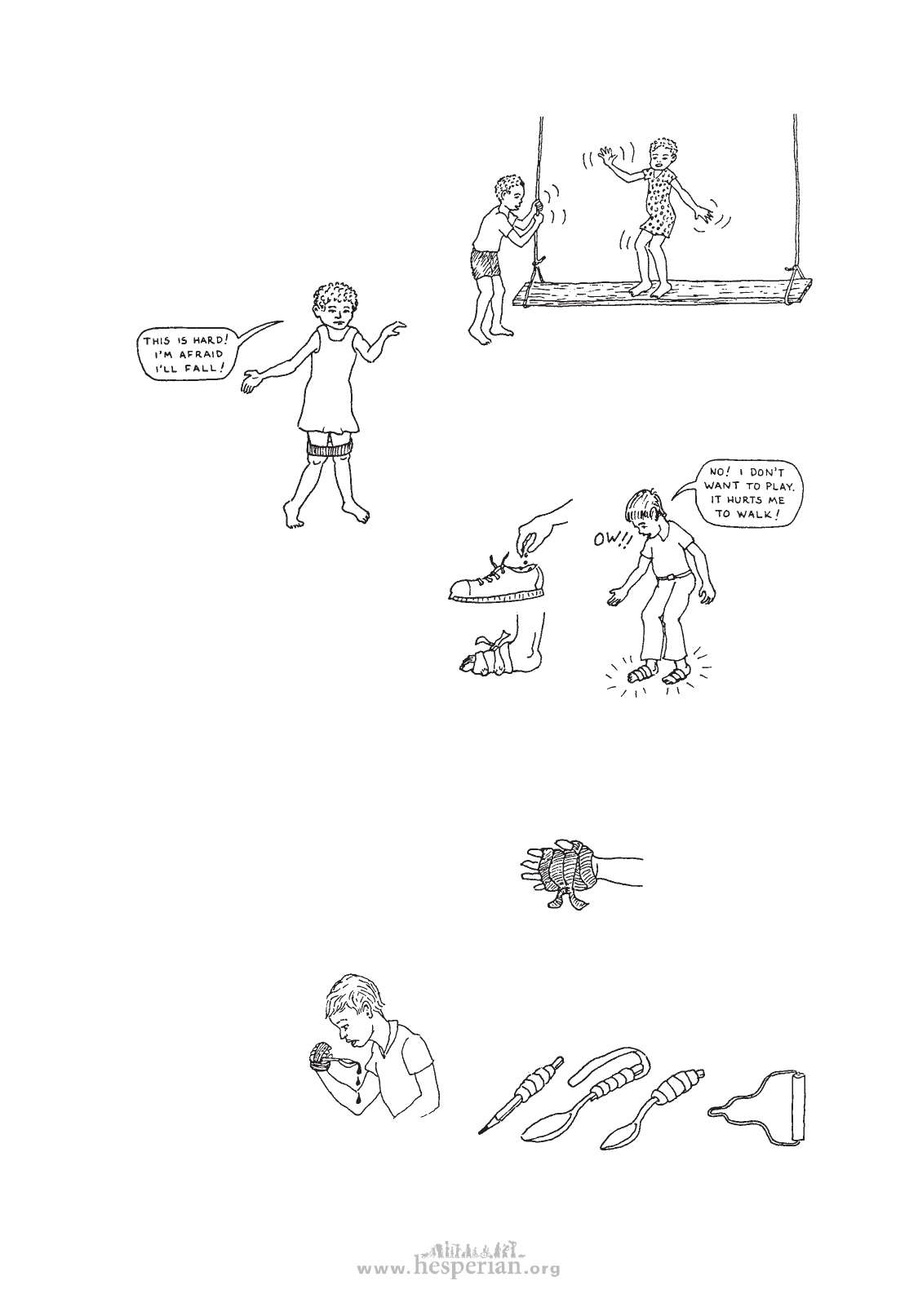
Help the children gain an understanding
of the particular difficulties of any
disabled child in their village.
For example, if there is a child
with spastic legs who has trouble
walking because his knees press
together, have a child try to walk
with her knees tied together with
a band of car
tire inner tube.
CHILD-to-child 431
To appreciate the problems of a child
who has trouble with balance (cerebral
palsy), have one of the children try
to walk on a hanging board (or other
moving surface).
If there is a child with arthritis in
the village, some of the children can
put small stones in their shoes or tie
small stones to the bottoms of their
feet. Then the other children can
invite them to run and play games. Ask
the children why a child with arthritis
might not want to play games.
Ask the children, “Do you know any children who cannot use their hands like you
can?” If they answer yes, help them experience the difficulties of such a child. Have
the children work in pairs.
One child can wrap a strip of cloth around
the other child’s hand and fingers so that
he has trouble moving his fingers.
Now have the child try to do things like:
• write
• turn pages of a book
• fill a cup with water
• eat
• get something from a pocket
• button a shirt
Have the children try to figure
out ways to make it easier. For
example, wrap cloth or a piece
of inner tube around a pencil or
spoon, to make it easier to hold.
Note: For more ideas and tools
for persons with disabled hands,
see pages 223 and 330.
buttoning tool
(See p. 335.)
disabled village children